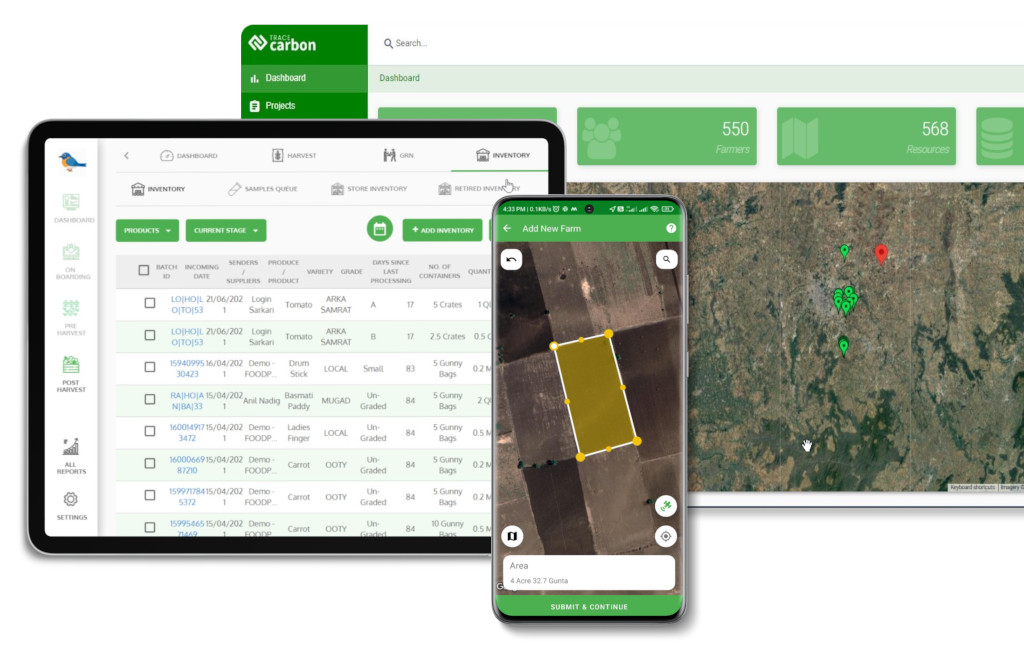Contact: +91 99725 24322 |
Menu
Menu
Quick summary: Discover the top challenges of EUDR for timber and wood industry players and how AI-powered digital traceability solutions turn compliance into a competitive advantage.

EUDR for Timber and Wood Industry Players introduces strict traceability, legality, and deforestation-free requirements, creating challenges in supply chain transparency, data collection, and compliance costs. Companies face risks of penalties and restricted EU market access if due diligence fails. Solutions include investing in digital traceability systems, strengthening supplier verification, adopting geolocation tools, and engaging in multi-stakeholder collaborations. Proactive compliance not only ensures market access but also enhances credibility and sustainability positioning in a highly regulated global trade environment.
For the timber and wood sector—spanning sawmills, timber producers, panel manufacturers, and traders—this regulation is particularly significant because wood is directly classified as a high-risk commodity. Unlike many other industries, these players rely on complex, global supply chains where raw materials often originate in regions with limited transparency or weak governance.
The challenge is twofold: first, ensuring full traceability back to the exact plot of land where timber was harvested, and second, demonstrating compliance through verifiable data that aligns with EUDR’s strict due diligence requirements. For sawmills, this means tracking log origins with precision; for panel manufacturers, it requires consolidating data from multiple suppliers; and for traders, it involves validating documentation across borders. Non-compliance not only risks hefty fines and loss of EU market access but also damages reputation in an industry increasingly scrutinized by regulators, investors, and customers.
This guide provides actionable insights into overcoming the unique challenges of EUDR for timber and wood industry players, while showcasing how technology can streamline compliance and strengthen long-term sustainability strategies.
Key Takeaways
Timber and wood industry players face four critical challenges under EUDR: collecting accurate geolocation data from diverse forest plots, maintaining full traceability when logs and panels are split or consolidated across supply chains, addressing certification gaps since FSC/PEFC labels cannot replace mandatory due diligence, and ensuring audit readiness with clean, long-term compliance records. Together, these hurdles make EUDR compliance complex, but with digital traceability and AI-powered monitoring, businesses can transform risks into resilience and secure stronger market credibility.
From forest to final product, compliance starts with traceability. Discover practical strategies in our blogs on
For sawmills, EUDR compliance is far more than an administrative checkbox—it is a structural challenge tied directly to raw material sourcing.
To turn compliance into an operational strength, sawmills can leverage digital tools designed for scale and accuracy:
Most sawmills see EUDR as a compliance cost. A unique perspective is to frame it as a sales advantage. Customers—especially EU buyers—are under pressure to prove their supply chains are deforestation-free. Sawmills that invest early in geolocation traceability and blockchain-backed compliance can position themselves as preferred partners, commanding better contracts and long-term trust.
Additionally, the data generated for compliance can be repurposed for operational optimization: understanding supply patterns, improving yield management, and reducing waste. In other words, the same digital backbone that secures compliance also creates business intelligence that drives efficiency and profitability.

Key Challenges
Engineered timber producers face some of the steepest hurdles under EUDR because their products—MDF, plywood, laminated beams—are built from multiple inputs sourced across different regions and suppliers.
Technology can transform this compliance puzzle into a manageable—and even strategic—system:
While many see EUDR as a bottleneck for engineered timber, forward-thinking producers can flip the narrative. Composite products are often criticized for opacity in sourcing; by deploying cutting-edge traceability and risk scoring, producers can turn this complexity into a unique selling point. Imagine selling laminated beams not just as compliant, but as data-verified, deforestation-free materials—a message that resonates with EU importers, green building developers, and sustainability-driven investors.
Moreover, compliance data can feed into marketing and product storytelling: showcasing traceable origins in sustainability reports, labeling systems, or even QR codes on packaging. This not only builds trust but positions engineered timber as a premium, future-ready material in an industry where transparency is becoming a non-negotiable demand.
Panel manufacturers face one of the most operationally intense aspects of EUDR compliance: scale.
Forward-looking panel manufacturers are turning to digital systems that scale with production volume:
The unique angle for panel manufacturers is that buyers fear opacity at scale—the more SKUs a supplier has, the harder it is for customers to believe every product is deforestation-free. By investing in SKU-level traceability and automated filings, manufacturers can flip this perception and market themselves as the most reliable, lowest-risk partners for EU importers.
Additionally, compliance infrastructure can double as product intelligence: linking SKU data with sourcing trends enables smarter production planning, raw material optimization, and even sustainability-driven product innovation. Instead of viewing EUDR as a regulatory burden, panel producers can position themselves as data-enabled manufacturers, capable of offering not just compliant panels but digitally assured products that command premium trust in competitive markets.
As consolidators in the timber ecosystem, wood traders are under heightened scrutiny.
Digital traceability can turn this audit risk into a strength:
Most traders see themselves as middlemen, but under EUDR they can reposition as gatekeepers of trust. By guaranteeing clean, segregated, and validated supply chains, traders move from being high-risk consolidators to low-risk, high-value partners. This becomes a competitive differentiator in an environment where buyers want certainty and speed above all else.
A unique angle is to leverage compliance data as a service offering: traders can provide buyers with digital assurance packs—complete with DDS records, risk assessments, and blockchain-backed trails. This not only strengthens customer loyalty but opens new revenue opportunities, as traders transform from commodity suppliers into compliance-as-a-service partners for their clients.
A Finnish sawmill sources logs from 150 small forest plots across different owners. Each plot must provide geolocation coordinates under EUDR. Without a digital system, data comes in spreadsheets and handwritten notes, making compliance nearly impossible. By using a traceability platform with GeoJSON mapping and batch tracking, the sawmill links every log to its origin and maintains continuity when logs are split into beams, planks, and by-products.
An Italian plywood manufacturer imports veneers from Indonesia, Brazil, and Eastern Europe. Each sheet of plywood may combine inputs from multiple regions, each needing a Due Diligence Statement (DDS). Certifications like FSC are in place, but regulators demand plot-level data. By adopting AI-driven DDS workflows, the company connects supplier certifications, geolocation data, and DDS records into one dashboard, proving compliance for every mixed-source product.
A German MDF producer manages over 600 SKUs differentiated by thickness, density, and finish. Panels are imported, processed, and re-exported across EU and non-EU markets, requiring multiple DDS filings in different jurisdictions. Paper-based systems collapse under this complexity. By implementing a multi-SKU compliance dashboard with SKU–batch linkage and cloud-based archives, the company maintains 5+ years of records while filing seamlessly through EU TRACES.
A Rotterdam-based timber trader consolidates shipments from Africa, South America, and Southeast Asia before distributing across Europe. In the warehouse, compliant and non-compliant timber risk being mixed, exposing the trader to severe audit penalties. By deploying segregation and lot management tools, plus instant DDS validation via EU TRACES, the trader prevents contamination and provides automated audit-ready trails—positioning themselves as a trusted, low-risk partner for EU buyers.
Digital traceability platforms cut through the complexity of EUDR compliance by unifying fragmented processes into one seamless system. TraceX’s AI-powered EUDR solutions are purpose-built to deliver this transformation:
By embedding TraceX, companies not only meet EUDR requirements but also turn compliance into a competitive advantage—building market trust, reducing audit risks, and unlocking data-driven insights that support broader sustainability and net-zero goals.
EUDR presents undeniable challenges for sawmills, panel producers, engineered timber manufacturers, and traders—ranging from geolocation mapping to audit readiness. Yet, with digital traceability and AI-powered solutions, these hurdles can be transformed into opportunities. Companies that invest early in transparent supply chains, automated DDS filing, and real-time risk monitoring not only secure compliance but also position themselves as trusted, future-ready partners in the global timber trade. In short, EUDR is not just about avoiding penalties—it’s about building resilient, sustainable, and market-leading businesses.
Frequently Asked Questions (FAQ’s)
The main challenge is ensuring geolocation-based traceability for every log or input, particularly in complex, multi-supplier supply chains.
No. While valuable, these certifications do not replace EUDR’s requirement for plot-level geolocation data and due diligence statements.
AI enables automated DDS filing, satellite-powered risk detection, and predictive dashboards that identify high-risk suppliers or regions before compliance issues arise.
